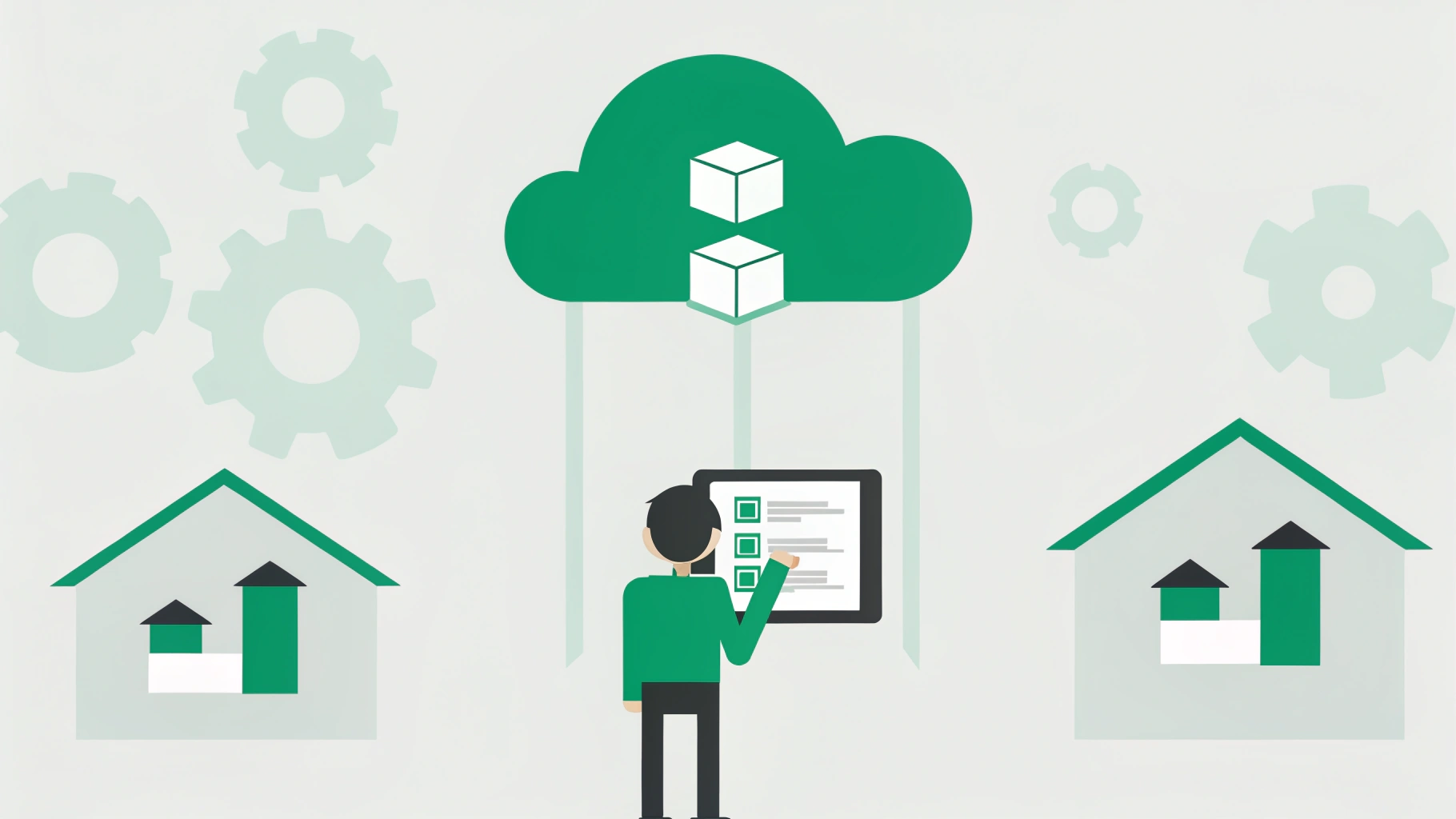Overview
Key factors influencing ERP pricing for distributors encompass several critical elements:
- Deployment model
- Scalability
- Customization options
- Training and support
- Integration capabilities
- User licenses
- Industry-specific features
- Maintenance and upgrades
- Regulatory compliance
- Total cost of ownership
Understanding how these elements impact overall pricing and operational efficiency is paramount. By grasping these factors, distributors can make informed decisions that align with their financial and operational goals. This knowledge not only enhances their strategic planning but also positions them to optimize their investments in ERP solutions.
Introduction
Navigating the intricacies of ERP pricing can resemble walking through a labyrinth, particularly for distributors eager to optimize operations without incurring excessive costs. This article explores ten critical factors that influence ERP costs, shedding light on how cloud-based solutions, scalability, customization, and more can impact financial decisions. As businesses pursue efficiency and growth, the challenge becomes identifying which elements deliver the most value while steering clear of hidden expenses.
What strategies can distributors implement to ensure informed choices that align with their operational objectives and budgetary constraints?
Cloud-Based Deployment: Cost-Effective ERP Solutions
Cloud-based ERP solutions typically necessitate a lower initial investment due to the lower ERP price compared to their on-premises counterparts. By eliminating the need for substantial hardware purchases and ongoing maintenance, suppliers can utilize resources more effectively. For instance, 10X ERP exemplifies this with its all-inclusive pricing model, encompassing all functionalities, features, modules, tools, and dashboards. This approach facilitates improved cash flow management, enabling businesses to expand operations without incurring significant upfront costs. Consequently, 10X offers an attractive option for many distributors due to its competitive ERP price.
Furthermore, organizations that migrate to cloud-based ERP systems often report that the ERP price results in average savings of 30% over five years, attributed to predictable subscription costs and reduced IT overhead. With 10X ERP’s real-time data processing and seamless integrations, companies frequently realize substantial cost savings in their first year alone, further underscoring the financial advantages of cloud ERP. Additionally, the rapid onboarding process and high-quality cloud server hosting enhance operational capabilities, allowing suppliers to achieve considerable savings while boosting efficiency.
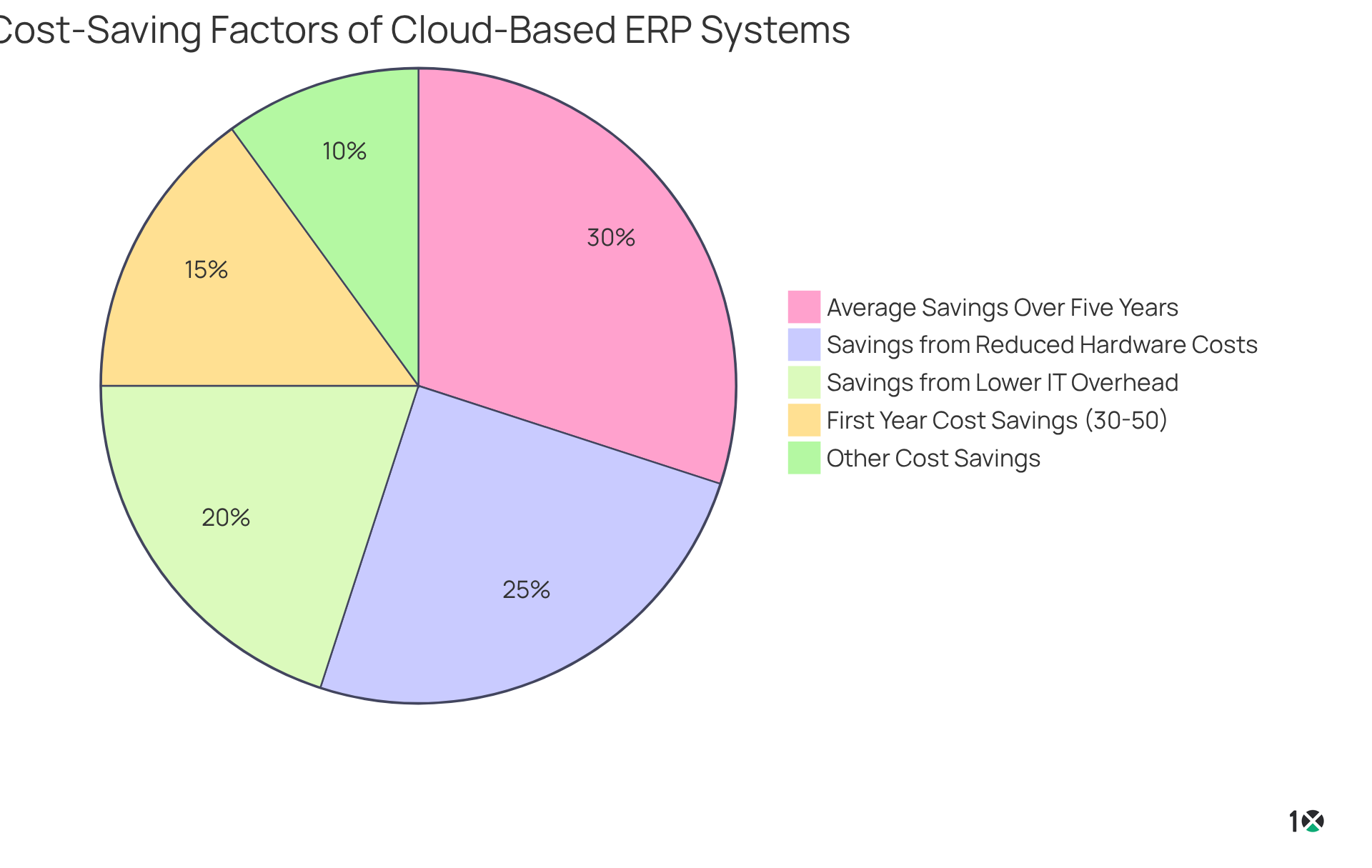
Scalability: Adapting ERP Costs to Business Growth
As suppliers expand, their operational needs evolve, making it imperative to implement an ERP system that scales effectively. 10X ERP delivers scalable solutions that empower businesses to incrementally add users, modules, and functionalities, thereby enhancing financial management. This adaptability ensures that distributors incur costs only for the features they actively utilize, preventing unnecessary charges while supporting their growth.
With its fully cloud-based platform, 10X ERP offers real-time data processing and a responsive design—essential elements for modern distribution requirements. Moreover, the seamless onboarding process and intuitive user experience enable rapid adaptation for new users.
According to Softwarepath, 95% of companies experience significant improvements after adopting solutions with an ERP price, underscoring the efficacy of scalable solutions. Operations managers emphasize that investing in a scalable ERP solution like 10X is vital for long-term success, as the ERP price allows for smooth adjustments to changing business needs without incurring excessive costs.
Additionally, the transparent pricing framework ensures that companies understand the benefits they gain as they grow, positioning 10X as a compelling choice for suppliers looking to enhance their operations with a competitive ERP price.
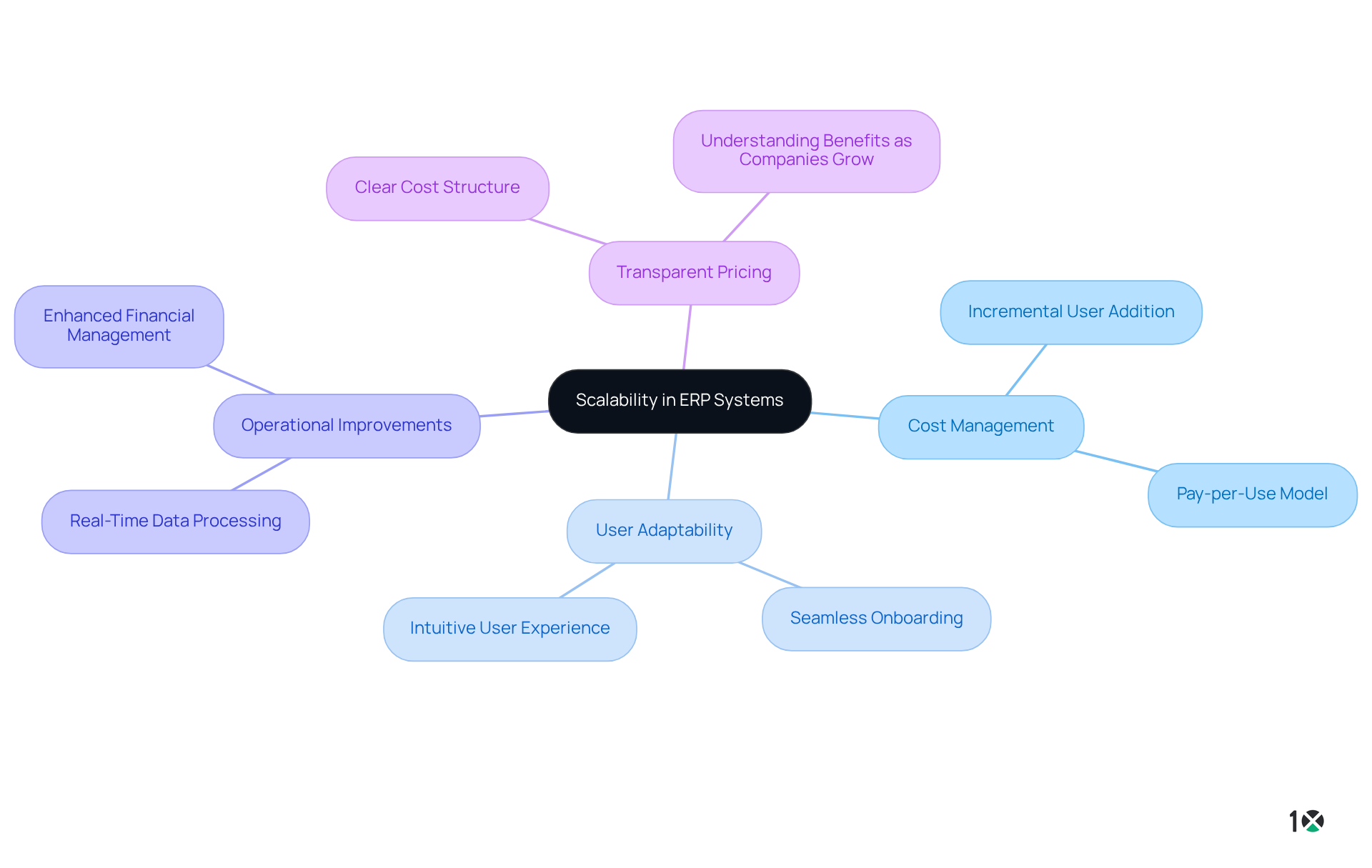
Customization Options: Tailoring ERP to Fit Unique Needs
Tailoring an ERP system can significantly enhance its functionality, aligning it more closely with the specific operational requirements of suppliers. 10X ERP, an innovative cloud-based solution, provides robust features tailored for wholesale distributors, including real-time data processing and seamless integrations.
However, it is crucial to evaluate the costs associated with extensive customization, as the ERP price can lead to increased implementation and ongoing maintenance expenses. Research reveals that businesses frequently underestimate these costs by approximately 20%, which can adversely affect overall budgeting and ROI.
Distributors must carefully assess their unique requirements and weigh the potential benefits of customized solutions against the likelihood of elevated expenses. For example, companies that have successfully implemented tailored ERP solutions, such as 10X ERP, report enhanced operational efficiency and improved alignment with their business processes.
Furthermore, 10X ERP includes a support beacon integrated within the platform, facilitating user communication with support, issue reporting, and access to documentation, which can aid in the customization process.
Balancing the advantages of customization with its financial implications is essential for making a prudent investment in ERP technology, especially when considering the ERP price.
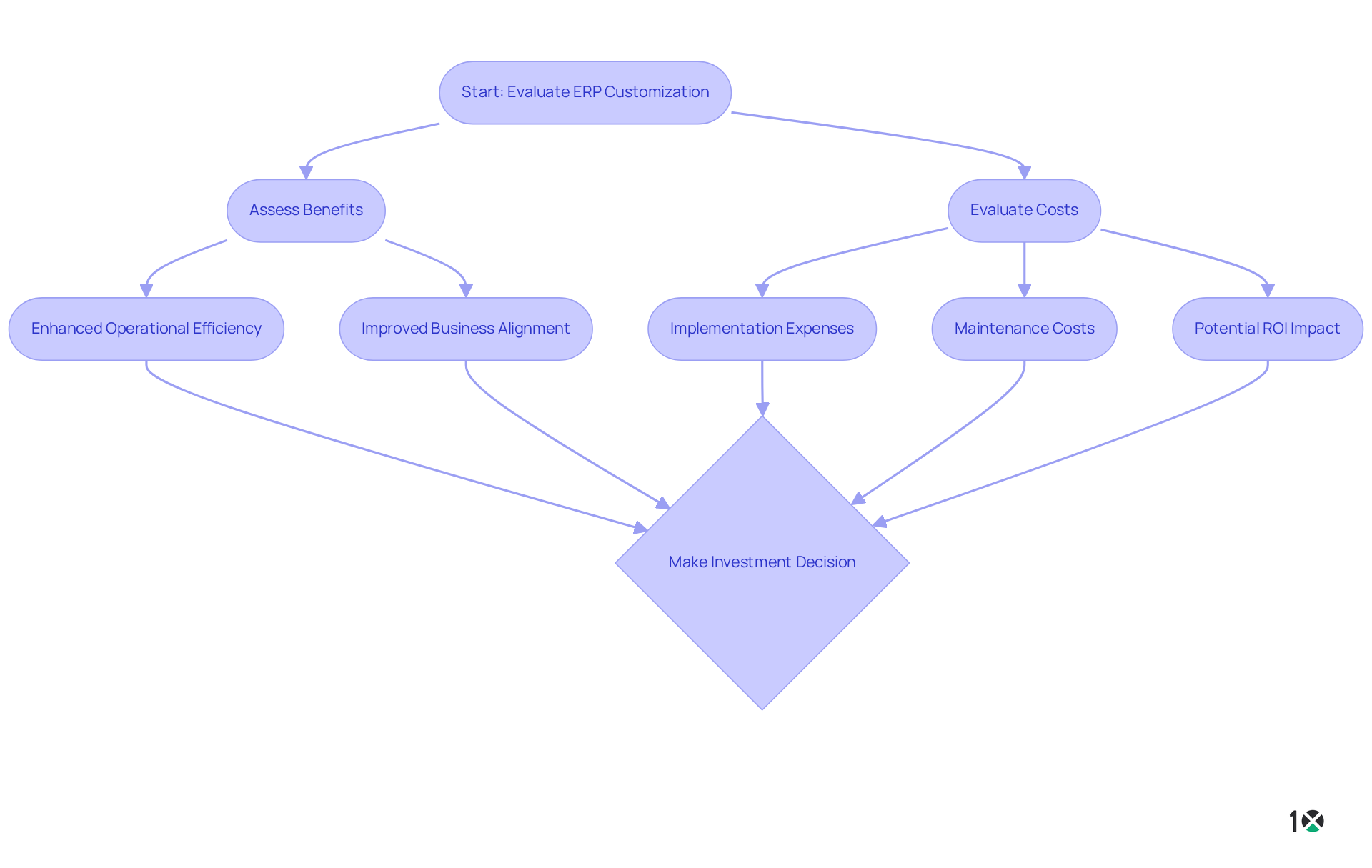
Training and Support: Essential Components of ERP Pricing
Effective training and ongoing support are essential for empowering users to fully leverage the capabilities of an ERP system. Research demonstrates that organizations investing in comprehensive training programs can experience user adoption rates soar beyond 70%. Although many suppliers include basic training in their ERP price, additional support services can incur extra costs that warrant careful consideration. In 2025, the ERP price for training and support services may vary from $1,000 to $15,000 for small to mid-sized businesses, depending on the complexity of the implementation and the degree of customization needed. Operations managers consistently highlight the significance of training, asserting that well-trained employees not only boost productivity but also foster a more engaged workforce. By thoughtfully evaluating these training and support costs, suppliers can make informed decisions that yield a better return on investment and enhance operational efficiency.
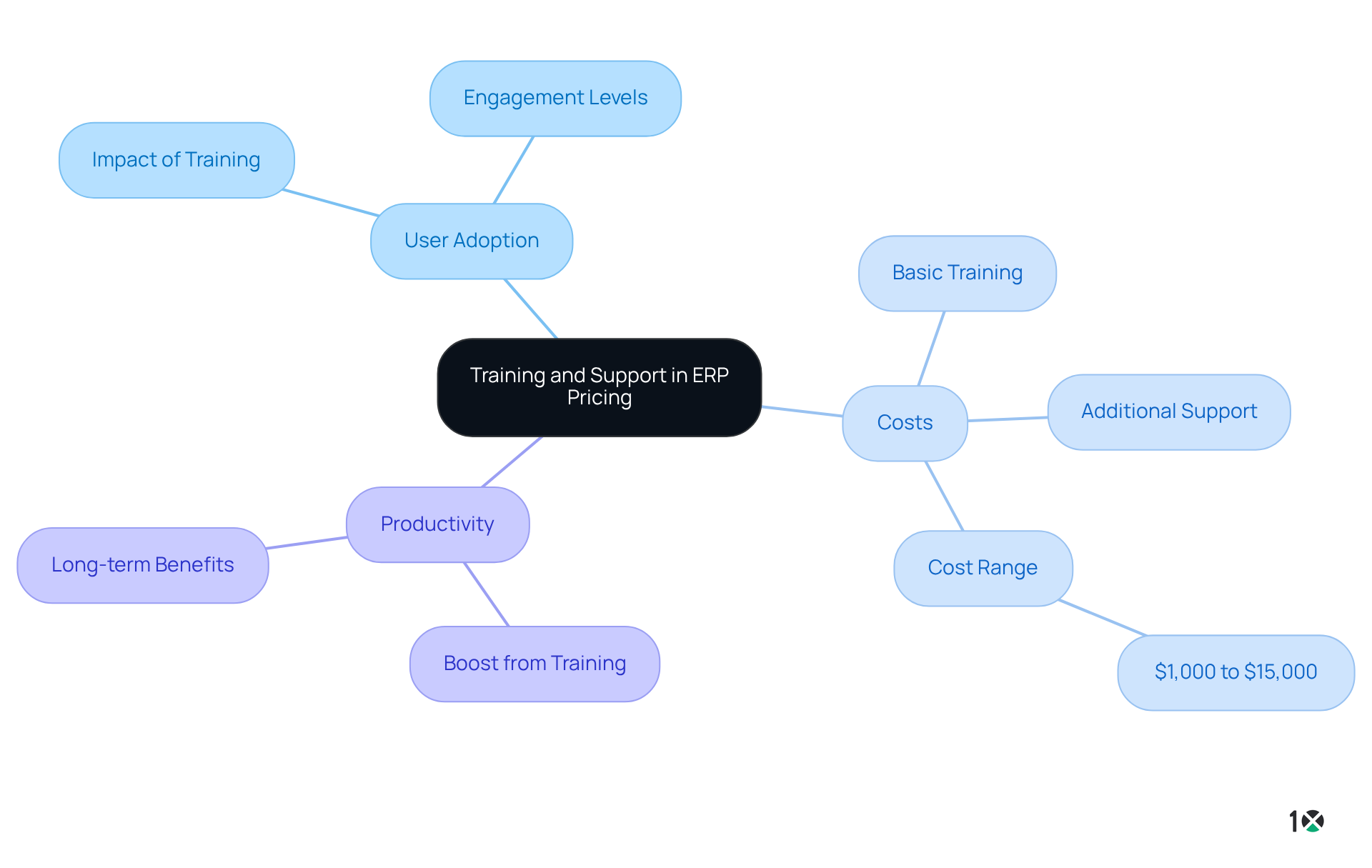
Integration Capabilities: Enhancing ERP Functionality and Value
Integrating an ERP system with existing software solutions is essential for maximizing functionality and ensuring operational efficiency. Statistics indicate that effective ERP integration can lead to significant operational efficiency gains by streamlining processes and eliminating manual tasks.
For distributors, the ERP price and other expenses related to integration—such as fees for API access or third-party connectors—should be carefully considered. However, the benefits often outweigh the costs associated with the ERP price. A well-integrated ERP like 10X ERP enhances data accuracy and provides real-time insights, empowering teams to make informed decisions swiftly.
Companies that have successfully integrated their ERP systems, particularly those considering the ERP price of 10X ERP, report improved productivity and reduced operational expenses, reinforcing the value of investing in robust integration capabilities.
With features such as seamless API integrations, a comprehensive cloud-based solution, transparent pricing, and rapid onboarding, 10X ERP stands out as a customized choice for suppliers. Industry leaders emphasize that maximizing ERP functionality through integration is not just a strategic advantage; it is a necessity for distributors aiming to thrive in a competitive landscape.
Operations managers are encouraged to assess their current ERP systems for scalability and integration capabilities to fully leverage these benefits. Consider evaluating 10X ERP to enhance your operational efficiency and drive your business forward.
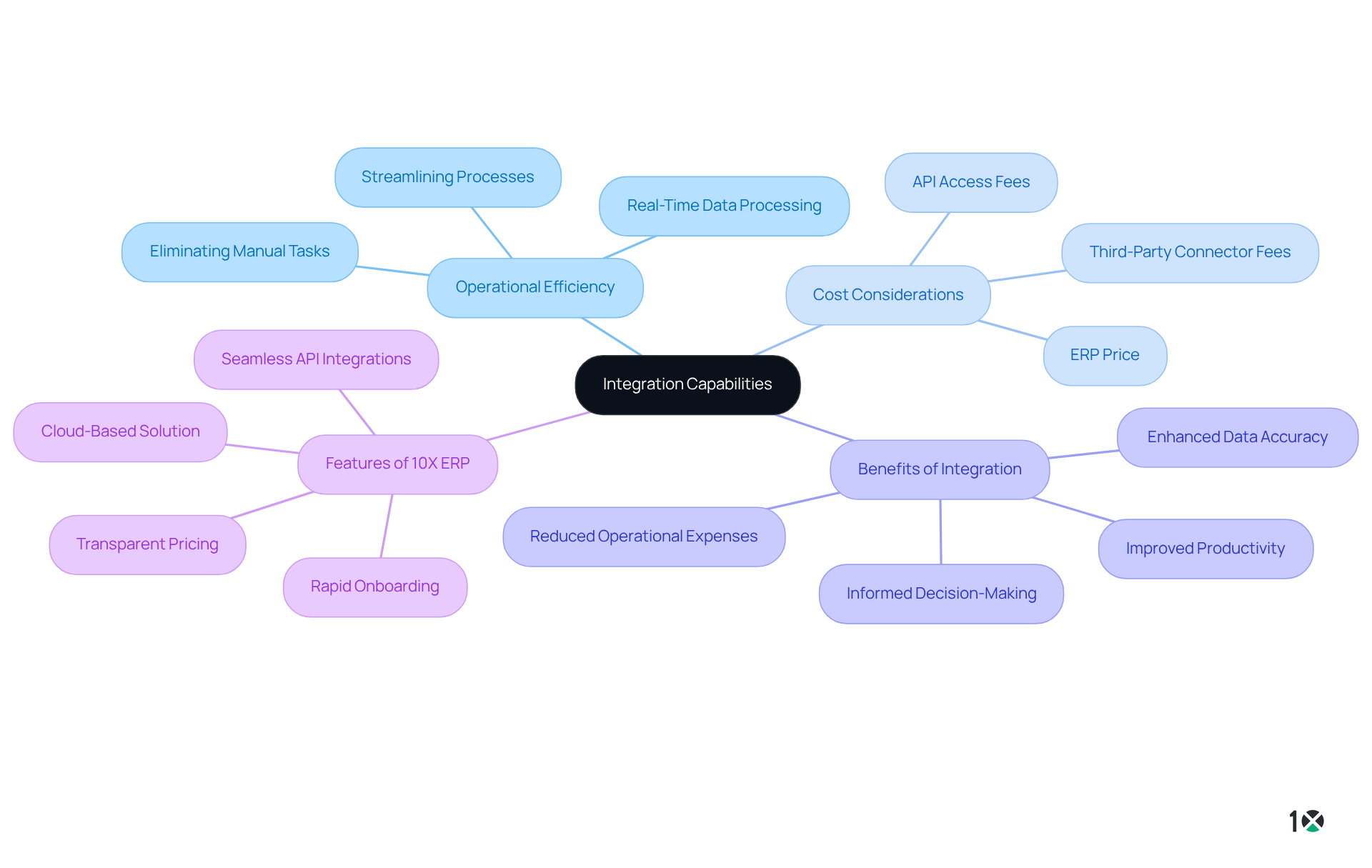
User Licenses: Understanding the Cost Implications
User licenses vary significantly in ERP price depending on the provider and the chosen licensing model. At 10X ERP, we provide a transparent and consistent pricing framework for ERP price that encompasses all functionalities, features, modules, tools, and dashboards. This approach enables distributors to budget effectively without hidden costs.
Distributors must carefully evaluate their user requirements, as expenses can rise quickly with additional licenses. Our all-inclusive pricing model eliminates the need to specify every module needed; they come standard from the outset. Understanding these structures is essential for accurate budgeting and ensuring that the ERP price remains cost-effective as the business grows.
With a minimum requirement of five users, our model simplifies adoption and supports suppliers in effectively managing their operations.
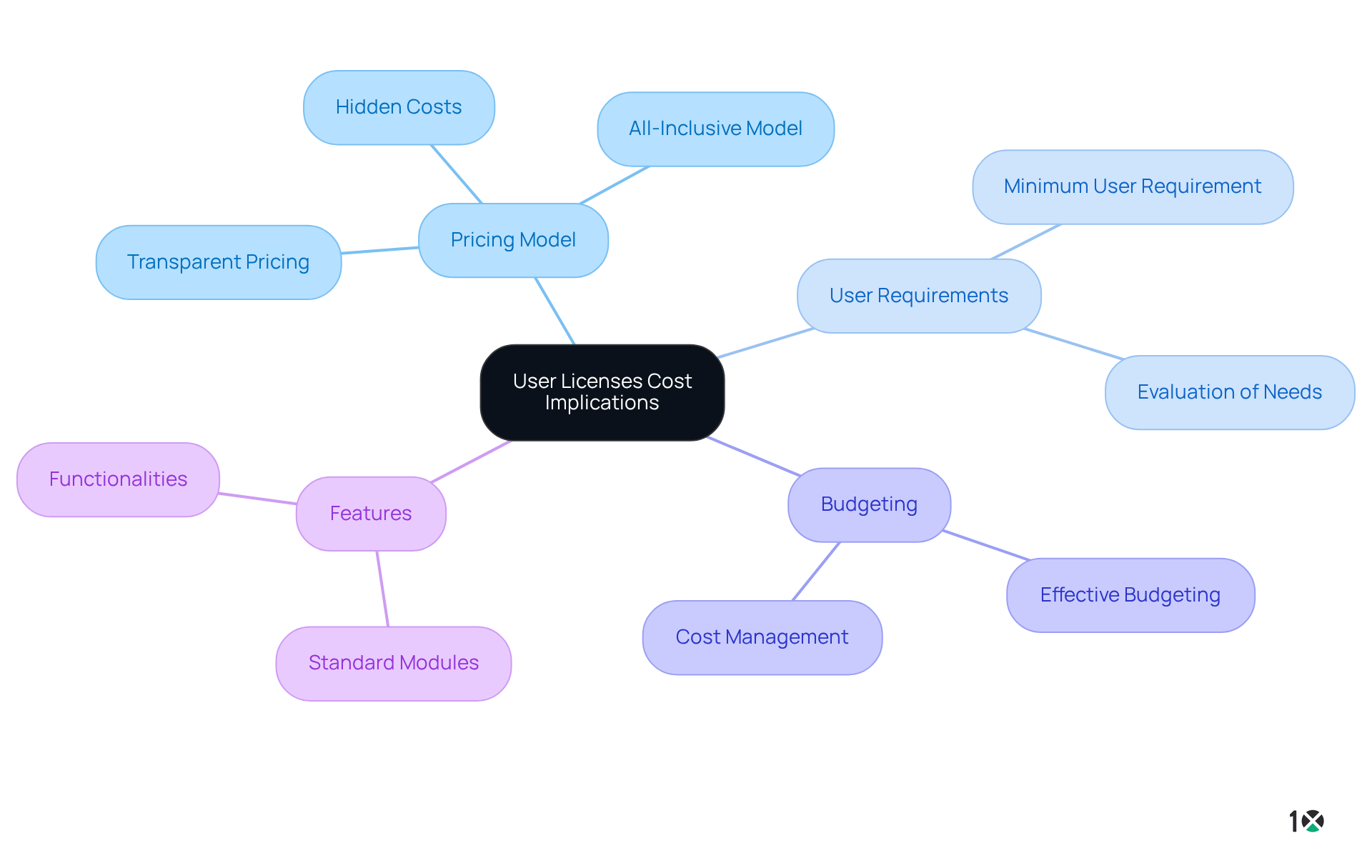
Industry-Specific Features: Justifying ERP Investment
Investing in an ERP solution tailored with industry-specific functionalities offers substantial advantages for suppliers. These customized features are designed to address unique challenges and enhance operational efficiency within specific sectors. While such solutions may entail a higher ERP price, the potential for increased productivity, compliance, and streamlined processes often justifies the investment.
For example, suppliers can utilize capabilities like advanced inventory management and real-time data analytics to optimize stock levels and improve decision-making. According to the Panorama ERP Report 2023:
- 90.9% of organizations realized expected benefits regarding inventory levels, underscoring the effectiveness of these features.
- 68% of organizations report revenue growth linked to cloud-based ERP solutions, illustrating the financial benefits of such investments.
Evaluating the specific functionalities available and aligning them with operational needs is crucial for maximizing return on investment. In fact, 83% of organizations that conducted an ROI analysis indicated their ERP implementation met ROI expectations, highlighting the significance of thorough evaluation.
Industry leaders, including Alan Margulis, emphasize that understanding the latest trends and data can greatly enhance ERP strategies, propelling businesses toward greater efficiency and success. Ultimately, the right ERP solution not only addresses immediate operational needs but also positions distributors for long-term growth and adaptability in a competitive market.
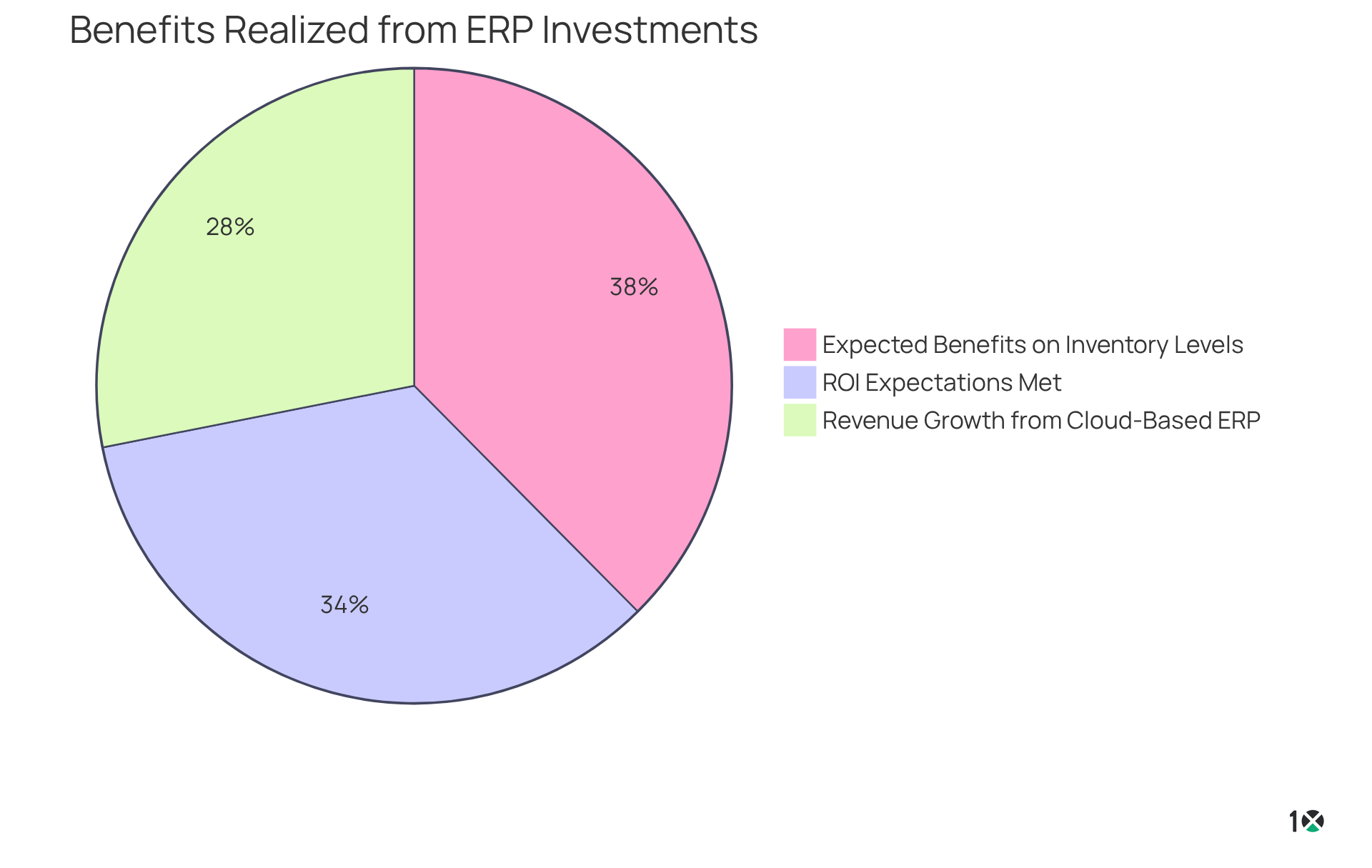
Maintenance and Upgrades: Planning for Future ERP Costs
Maintenance and enhancements represent ongoing expenditures that can significantly impact the ERP price and the total cost of owning an ERP solution. Distributors must proactively engage with vendors to clarify their maintenance fee policies, which typically range from 15% to 20% of the ERP price annually. Understanding the upgrade process and its associated costs is essential for effective budget planning, ensuring that the ERP solution remains current and meets evolving business needs.
Statistics show that many organizations face budget overruns during ERP implementations, often due to underestimating these recurring expenses. Thus, it is imperative for operations managers to incorporate maintenance fees into their calculations of the long-term financial implications of the ERP price of their investments. This foresight enables better future preparedness and mitigates the risk of unforeseen costs that could hinder overall operational efficiency.
With 10X ERP’s transparent pricing structure, operations managers gain clarity on the value they receive, both now and as they scale. Additionally, features such as premium cloud-server hosting, continuous data backup, and two-factor authentication enhance data integrity and security, further augmenting the overall value of the ERP solution.
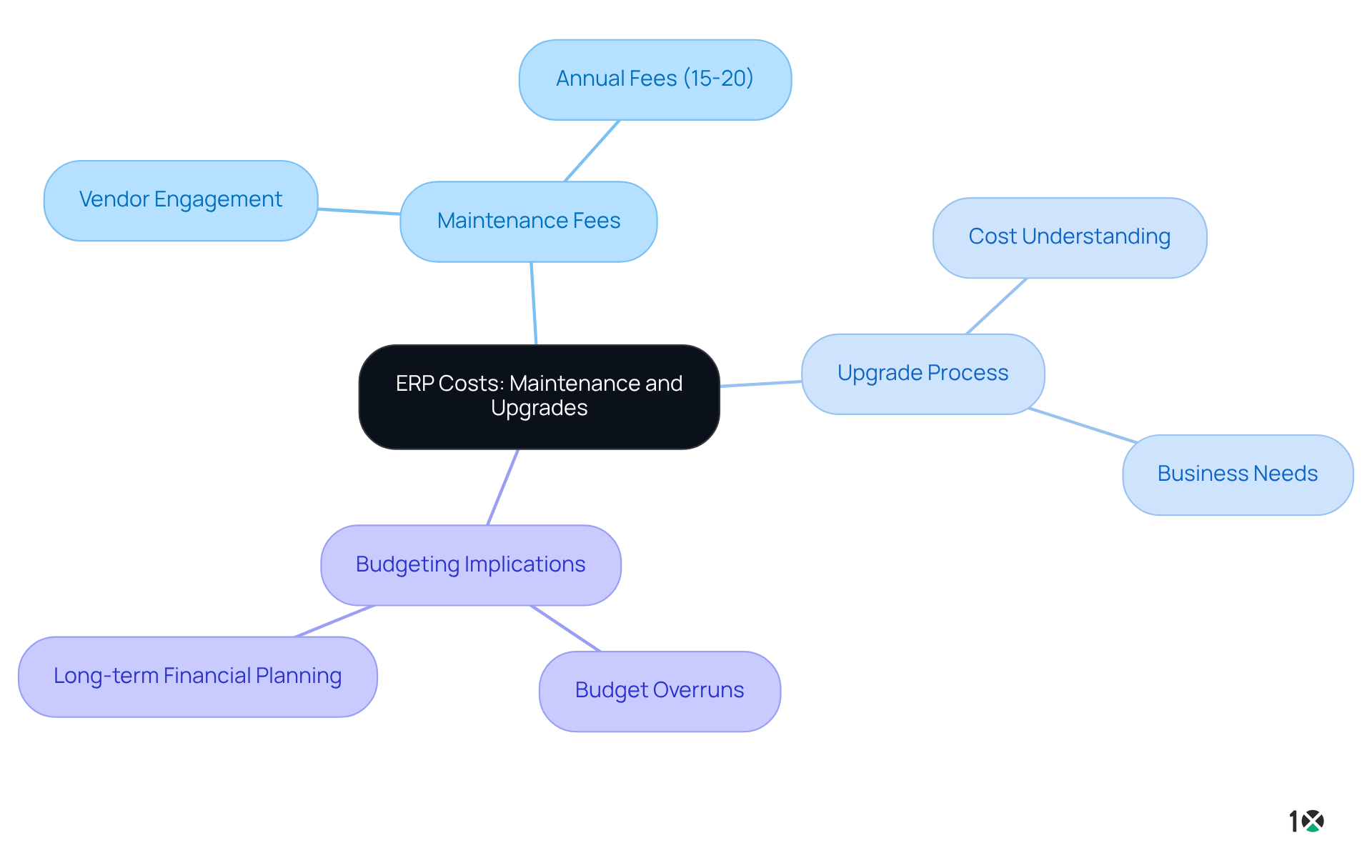
Regulatory Compliance: Navigating ERP Pricing Challenges
Adherence to industry regulations is essential for distributors, and the ERP price for solutions equipped with integrated compliance functionalities often comes at a premium. Distributors must conduct a thorough assessment of the compliance capabilities of potential ERP solutions, as these features can significantly influence operational efficiency and risk management. Firms investing in ERP solutions aimed at enhancing regulatory compliance not only save time but also mitigate the risk of incurring costly penalties.
Notably, 85% of senior executives have reported an increase in organizational change projects, underscoring the rising significance of compliance in business operations. Furthermore, industry leaders assert that an effective ERP solution is vital for integrating various business functions while ensuring adherence to regulations.
With the global digital transformation market projected to reach $1,009.8 billion by 2025, the demand for ERP solutions that tackle compliance challenges is set to grow. Distributors navigating these complexities should consider the ERP price associated with systems that offer robust compliance features, as the long-term savings from avoiding regulatory penalties can outweigh the initial investment.
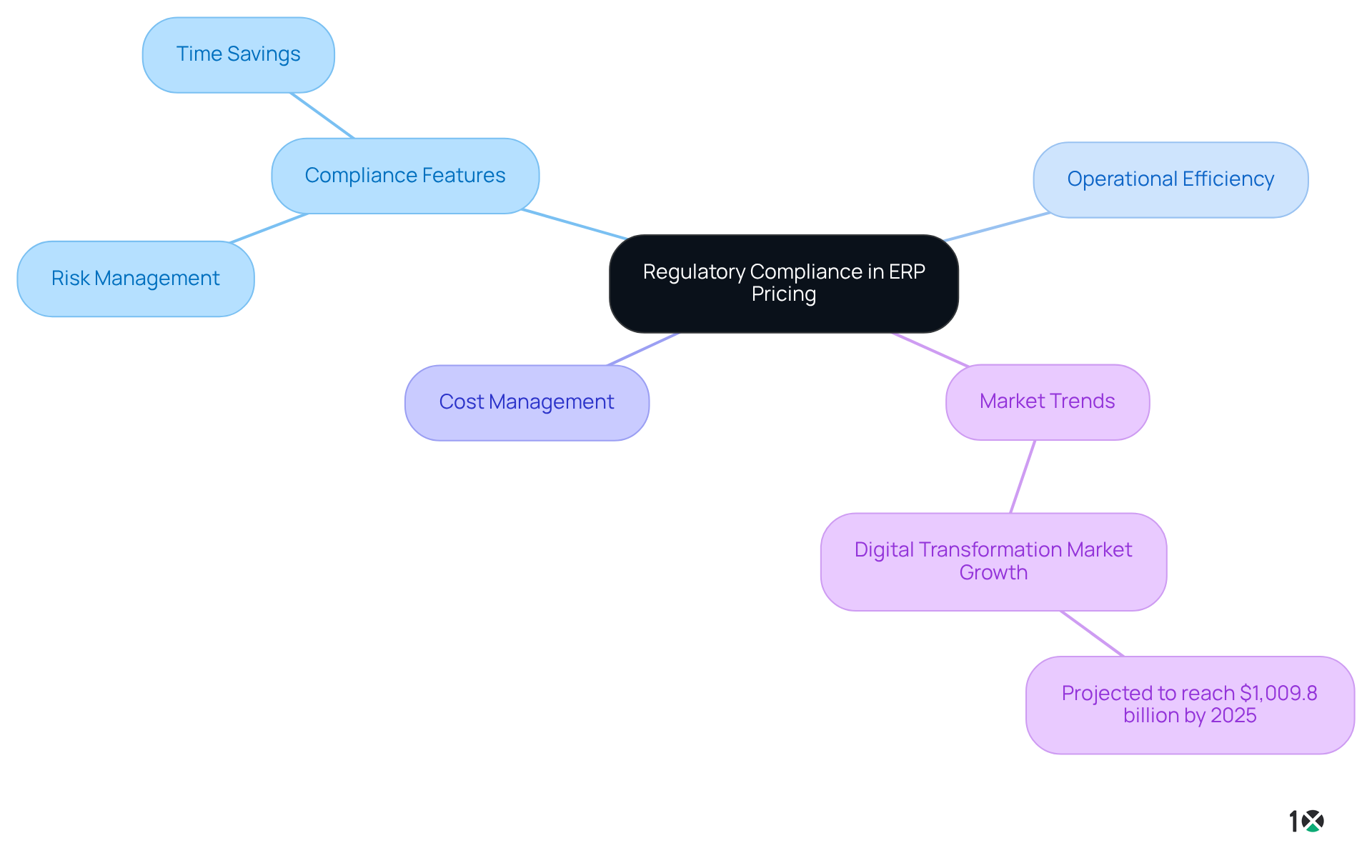
Total Cost of Ownership: Evaluating ERP Pricing Beyond Initial Costs
Assessing the ERP price requires a comprehensive understanding of the total cost of ownership (TCO). This encompasses not just the initial purchase price but also implementation costs, ongoing maintenance, and potential upgrade fees. For distributors evaluating 10X ERP, recognizing the ERP price and its transparent and predictable pricing structure is essential; it includes all functionalities, features, modules, tools, and dashboards in a single sum. This thorough approach simplifies the assessment process and helps prevent unexpected expenses, such as training fees, data migration, and system integration, that may arise during the ERP price lifecycle.
TCO calculations typically span several years, often a minimum of five years. Research indicates that businesses frequently overlook significant hidden costs, which can account for 30-50% of the total expenditure throughout the software’s lifespan. Furthermore, companies that transitioned to cloud ERP, such as 10X ERP, have reported substantial reductions in both the time and cost associated with IT maintenance. Those who adopted cloud ERP also experienced a 20% increase in productivity.
By understanding these factors, distributors can obtain a clearer perspective on their long-term financial obligations and make informed decisions that align with their operational goals. This is particularly relevant regarding scalability, as 65% of businesses identified scalability as a crucial factor in selecting cloud ERP systems.
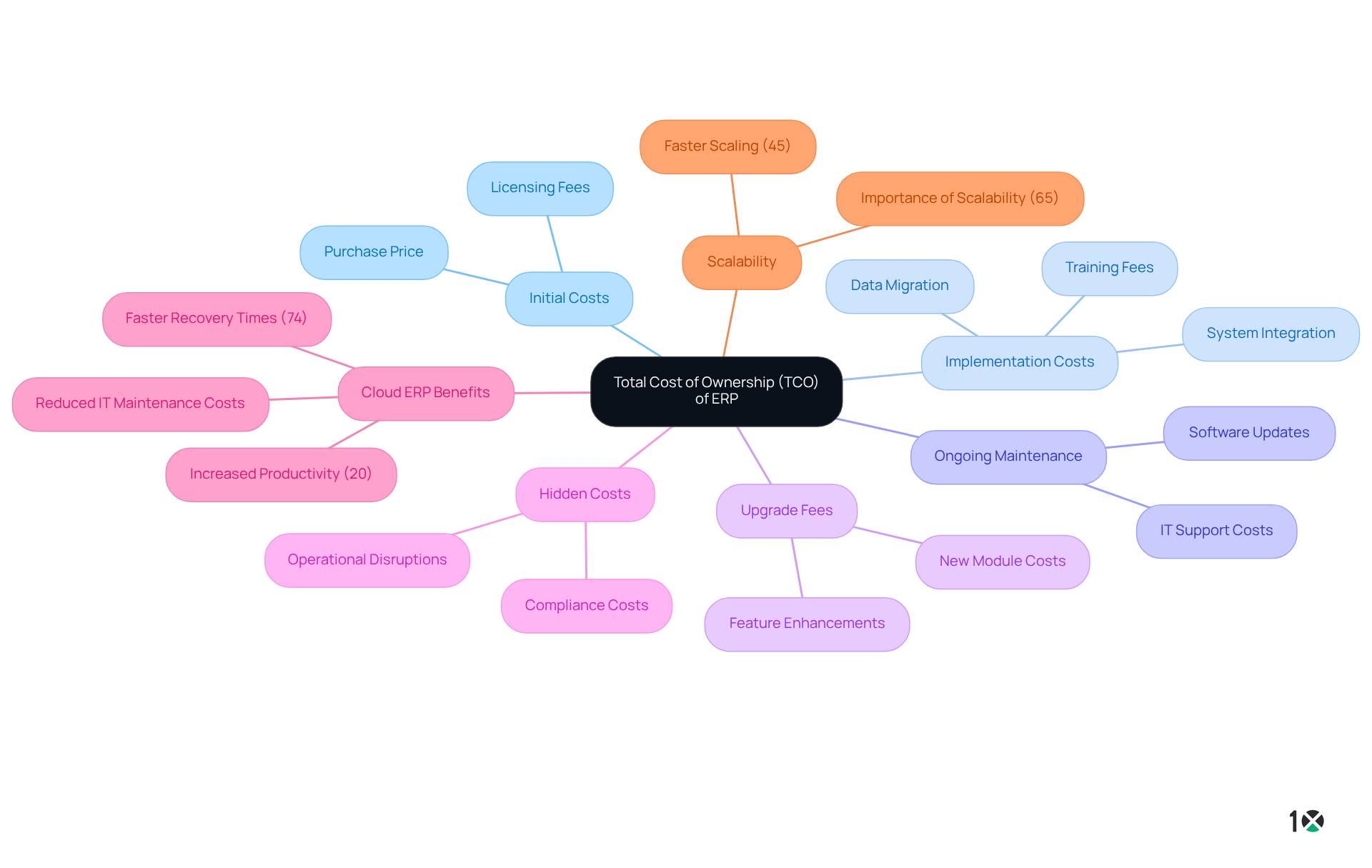
Conclusion
Understanding the factors that influence ERP pricing is crucial for distributors aiming to optimize operational efficiency and financial management. This article highlights how elements such as cloud-based deployment, scalability, customization options, and training impact the overall cost of ERP systems. By meticulously evaluating these factors, businesses can make informed decisions that align with their growth objectives while maximizing their return on investment.
Key insights reveal that cloud-based solutions, like 10X ERP, provide significant cost savings by reducing initial investments and IT overhead. Scalability empowers distributors to adapt their ERP systems to evolving needs without incurring unnecessary costs. Customization can enhance functionality, but it must be balanced against potential budget overruns. Moreover, effective training and integration capabilities are vital for realizing the full value of an ERP system, as they directly influence user adoption and operational efficiency.
In conclusion, distributors are encouraged to adopt a holistic approach when considering ERP pricing. This involves not only assessing initial costs but also understanding the total cost of ownership, which encompasses maintenance, upgrades, and compliance-related expenses. By prioritizing transparency and thorough evaluation, businesses can position themselves for long-term success and adaptability in a competitive landscape. Investing in the right ERP solution transcends mere financial decision-making; it is a strategic move that can drive efficiency, enhance productivity, and ultimately support sustainable growth.
Frequently Asked Questions
What are the cost benefits of cloud-based ERP solutions compared to on-premises systems?
Cloud-based ERP solutions generally require a lower initial investment due to reduced hardware costs and ongoing maintenance. For example, 10X ERP offers an all-inclusive pricing model that helps improve cash flow management and allows businesses to expand without significant upfront costs.
How much can organizations save by migrating to cloud-based ERP systems?
Organizations that migrate to cloud-based ERP systems often report average savings of 30% over five years, primarily due to predictable subscription costs and reduced IT overhead.
What advantages does 10X ERP provide in terms of operational efficiency?
10X ERP offers real-time data processing, seamless integrations, and a rapid onboarding process, which enhance operational capabilities and lead to substantial cost savings, often realized in the first year.
How does 10X ERP accommodate business growth?
10X ERP provides scalable solutions that allow businesses to incrementally add users, modules, and functionalities, ensuring that distributors only incur costs for the features they actively use, aligning expenses with their growth.
What is the importance of scalability in ERP systems?
Scalability is crucial as it allows businesses to adjust their ERP systems according to evolving operational needs without incurring excessive costs. This adaptability supports long-term success and efficient financial management.
What customization options are available with 10X ERP?
10X ERP allows for significant customization to align closely with suppliers’ operational requirements, including features tailored for wholesale distributors, real-time data processing, and seamless integrations.
What should businesses consider regarding the costs of ERP customization?
Businesses should evaluate the potential costs associated with extensive customization, as these can increase implementation and ongoing maintenance expenses, often underestimated by around 20%.
How does 10X ERP support users during the customization process?
10X ERP includes a support beacon integrated within the platform, which facilitates user communication with support, issue reporting, and access to documentation, assisting in the customization process.
